Chile Earthquake
Status: Closed
Update 7 | Summary
Posting Date: March 19, 2010, 1:48:00 PM
This report is the fourth in a series from AIR’s ongoing damage survey in regions of Chile impacted by an M 8.8 earthquake that struck off the country’s coast on February 27. The photos and commentary here offer a glimpse into the kinds of damage patterns caused by this event.
In this report, AIR Principal Engineer Dr. Guillermo Franco, who has now joined the team from the Earthquake Engineering Research Institute (EERI), provides commentary from Talca and Constitución, cities much closer to the earthquake’s epicenter than those covered thus far. In Constitución, the tsunami spawned by the earthquake was also a major contributor to damage. As noted throughout the week, the general performance of modern construction—including residential structures—provides evidence that Chile’s strict building code significantly mitigated the damage, even in these more epicentral regions.
The most significant earthquake-related damage described in today’s report was to adobe structures in both cities, while tsunami damage detailed here was to both adobe structures and reinforced concrete buildings, some of the latter of which withstood the quake.
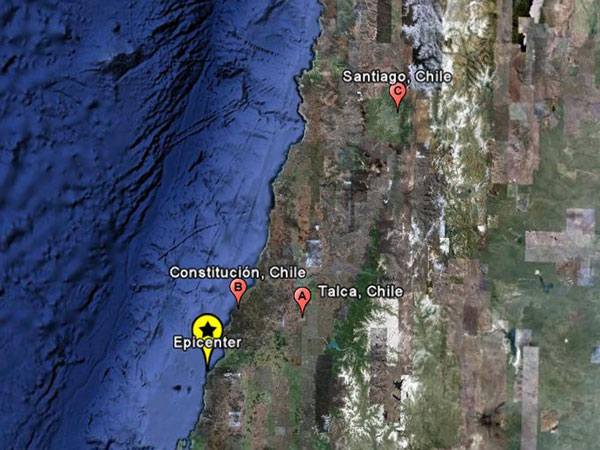
Figure 1: Talca and Constitución—both located in the Maule Region—were visited on this leg of the AIR team’s damage survey in Chile. (Source: Google Earth).
Talca
In the city of Talca, some 115 km from the epicenter, the earthquake caused significant structural damage to the historical town center, where buildings were mostly adobe. Even structures with adobe walls half a meter thick were heavily damaged. This outcome was very different from the one in Rancagua, some 160 km to the north, which withstood the quake very well.

Figure 2: Damage to adobe homes in Talca was exacerbated by several major aftershocks (Source: AIR). To date, reports indicate that about 1,500 homes in Talca (est. pop. 200,000) either collapsed or will require demolition. Demolition has already begun, but the municipality has not yet established a plan for reconstruction, to the consternation of residents. About eight thousand residents are currently without housing of their own; many are staying with relatives, many others are living in tents. Some of these old one-story residences were purchased under mortgage agreements; whether the mortgages carried insurance remains to be seen. AIR has been told that for residential risks that carry a mortgage, take-up rates approach 90-95%. Penetration falls below 10% for homes for which there is no mortgage.
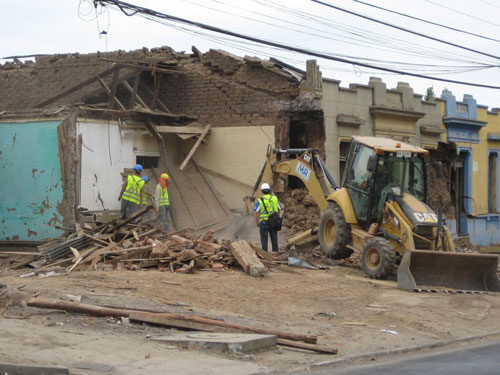
Figure 3: Demolition crews have begun their work in Talca (Source: AIR). In addition to damage to adobe buildings, three reinforced concrete structures in Talca were also damage. Their structural safety is still being assessed. However, Talca’s main commercial street was destroyed; what once was a collection of small- and medium-size shops is now just debris (Figure 4). As a result, many in the city have lost their source of income. Seven thousand employees in Talca have been dismissed, exacerbating the region’s already high unemployment.
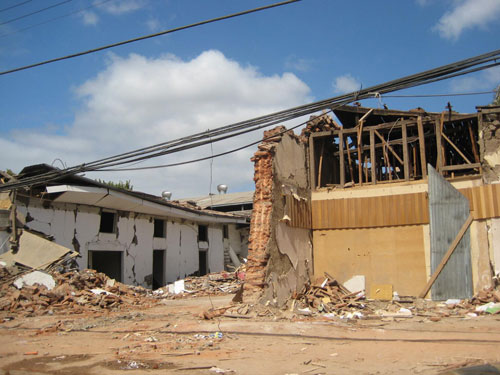
Figure 4: Debris on a main thoroughfare in Talca’s commercial center (Source: AIR).
On the road to Constitución
From Talca en route to Constitución—a distance of about 100 kilometers—humanitarian organizations are providing “mediaguas”(simple, single-family wood-frame homes) to more than 100 families displaced following the earthquake.
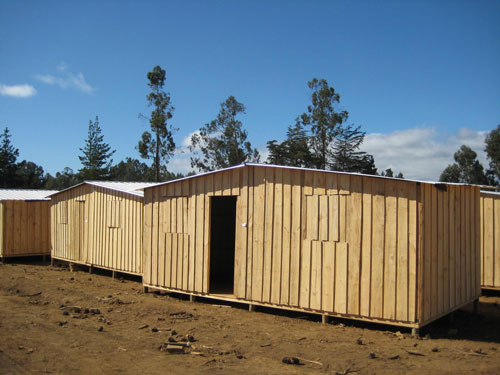
Figure 5: A mediagua in the village of Puerta Verde, on the road to Constitución (Source: AIR).
Constitución
The town of Constitución (est. pop about 40,000) sits on the coastal plain surrounded by hills. It is some 74 km north northeast of the earthquake’s epicenter. When the earthquake struck and the tsunami followed, Constitución was heavily damaged. As in Talca, most of the damage was to adobe structures. Figure 6 shows a section of the city in the quadrant defined by Hospital, Oñederra, Rengifo, and Echeverría streets. Most of the buildings on the plain will have to be demolished.
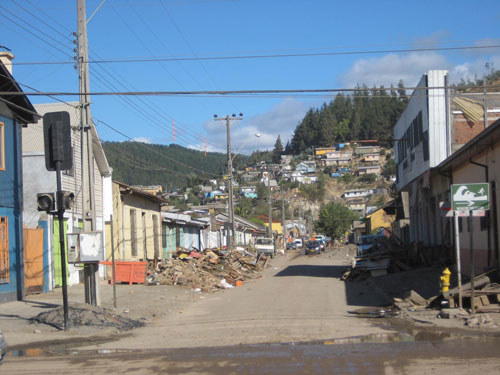
Figure 6: Constitución is on a plain surrounded by hills. While the hills were not greatly affected by the earthquake, structures on the plain were heavily damaged. (Source: AIR). Throughout the plain, the debris washed in by successive tsunami waves had accumulated in piles. Tourist traffic in Constitución will be slowed as the city undergoes major reconstruction efforts.

Figure 7: More damage to the plain in Constitución (Source: AIR).
Tsunami Damage in Constitución and the Maule Region
The area of the coast impacted by the tsunami that was spawned by the February 27th earthquake extends about 950 kilometers, from Valdivia, north to regions of the coast just south of Valparaiso. It is worthy of note that of the estimated 700 fatalities that resulted from the earthquake, the majority were due to the tsunami rather than the collapse of buildings. This once again highlights the strength and performance of Chile’s building codes. The most significant tsunami damage occurred in the fishing communities of the Maule Region—a poor, overcrowded stretch of Chile’s central coast. Informal wood homes were built directly in flood zones; many were completely washed out. AIR has learned that since the earthquake several insurance companies have stopped underwriting properties at elevations lower than 15 meters above sea-level.
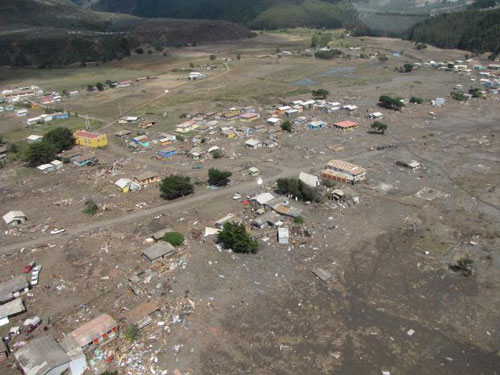
Figure 8: The tsunami that swept Chile’s coast destroyed whole villages, most of them very poor (Source: Cruz Roja Chilena) In Constitución, the waves arrived in a train of three, according to locals, washing over the city at a time when many visitors had gathered for annual festivities. An estimated 350 people were killed in Constituión alone; many who died were visitors, who did not know to head to higher ground. Water depth from the tsunami varied between a few centimeters near the hills, to about 3 meters at locations closer to the Maule river inlet. The fishing harbor was nearly destroyed, paralyzing the region’s valuable fishing industry. A paper pulp factory was also severely damaged, contributing to hefty losses to industry in the region. Combined with infrastructure losses, the business interruption losses that will inevitably result from the paper and pulp, fishing and wine industries are likely to contribute significantly to insurance claims. When the tsunami struck, new reinforced concrete homes in the surrounding hills were safe and, notably, they survived the ground shaking unscathed (Figure 9). But adobe and informal wood structures in the low-lying city were either damaged or swept away. Some confined masonry structures performed better.
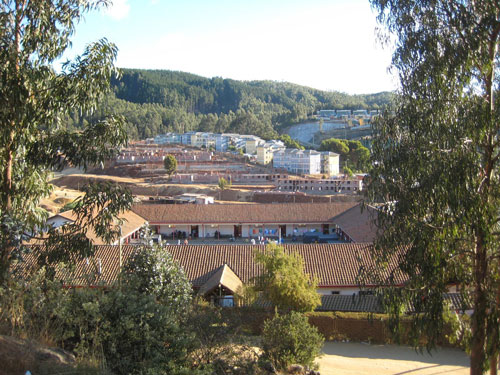
Figure 9: Several new reinforced concrete apartment buildings in the hills were not affected.(Source: AIR). On the plain, even reinforced concrete buildings fared less well in the face of the tsunami. The owner of the RC home in Figure 10 was present at the time of the earthquake and reported that the house was virtually untouched. Knowing a tsunami might follow the earthquake, the owner evacuated to the hills. When he returned, he found that the tsunami had completely destroyed his house. The water reached the third story, which is now filled with tsunami debris.
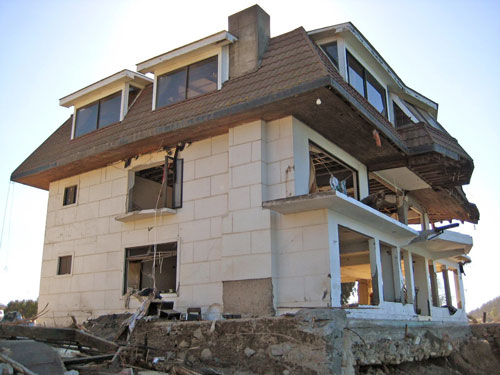
Figure 10: A reinforced concrete home that withstood the earthquake could was significantly damaged during the tsunami (Source: AIR). The few steel structures in Constitución included a warehouse and a train station. They experienced minimal damage.
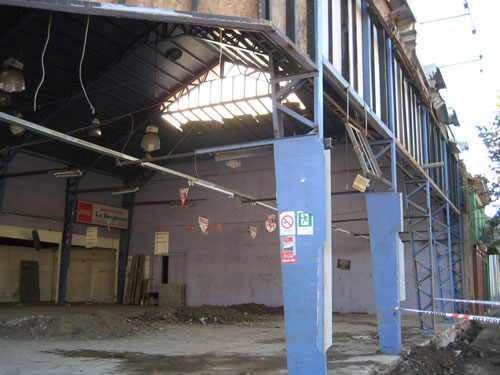
Figure 11: Steel frame structures experienced little structural damage. (Source AIR). AIR’s survey team in Chile is continuing to survey various regions impacted by the February 27th earthquake. Dr. Franco is now working with the EERI team in Concepción, south of today’s reconnaissance efforts. (AIR would like to thank other members of the EERI team for sharing their observations with our team in Chile.) Meanwhile, Guillermo Leiva—based in Santiago—is continuing to inspect impacted areas closer to the capital. ALERT subscribers will be notified when additional damage survey reports are posted to the ALERT website. The AIR earthquake team will continue to review the available information and provide updates as warranted.